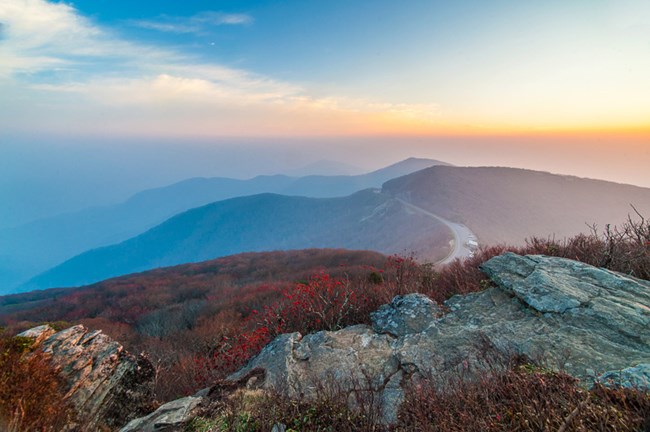
Robert Stephens photo Unlike many places in the US, wildland fires do not occur frequently in the Southern Appalachians. When fires do occur here, they tend to be less intense, burn smaller areas, and occur in limited ecosystems. But this is not to say that fire has no role here in the Appalachians—in some vegetation communities they are vitally important. Typically wildfires occur on exposed ridges or southern slopes where the fuels are exposed to wind and sunshine and the sites are drier. Fires at some of these sites may occur as often as every five to ten years. These days, fires on the parkway are more likely human-caused than the result of lightning strikes. From 1982 through 2002 there were 176 fires that occurred at least partially on park lands, burning 1,473 acres. Of these only 23 (13%) were lightning caused, burning a total of 506 acres. The remaining fires were the result of arson, campfires, cigarettes, vehicle fires, debris burning and other causes. Oak forests occur on drier sites and fires help them to compete with other trees. Oak trees have a thick bark and are able to survive the ground fires that are typical on these sites. Maples and many other trees have thin bark and even low-intensity fires can heat the cambium layer and kill these trees, removing them from competing with the oaks. Suppression of wildfires has resulted in many areas that once contained oak forest being converted to other forest communities. Wildfires along the parkway usually remain small, in part because of the type of fuels involved, but also because the fires are put out as soon as they are found. Almost half the fires that occurred between 1982 and 2002, (75 out of the 176 fires) only burned about 0.1 acres. Another 73 were less than 1 acre meaning that 83% of all fires were 1 acre or less. Only nine fires burned more than 100 acres. |
Last updated: November 20, 2019
